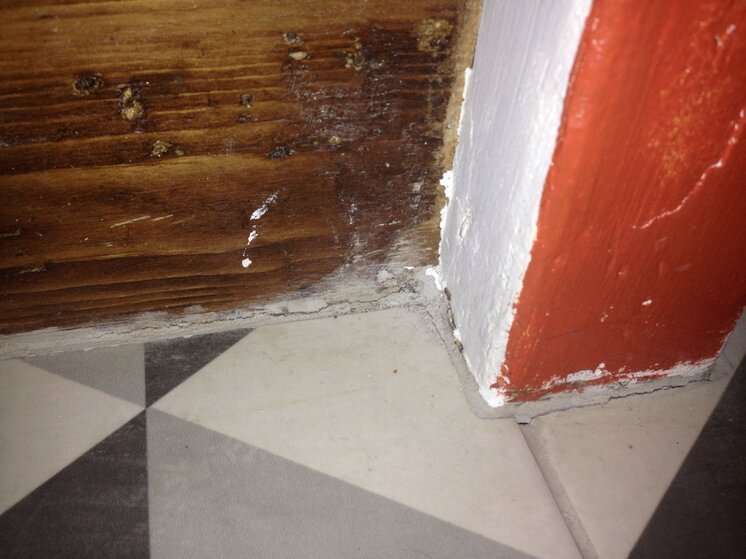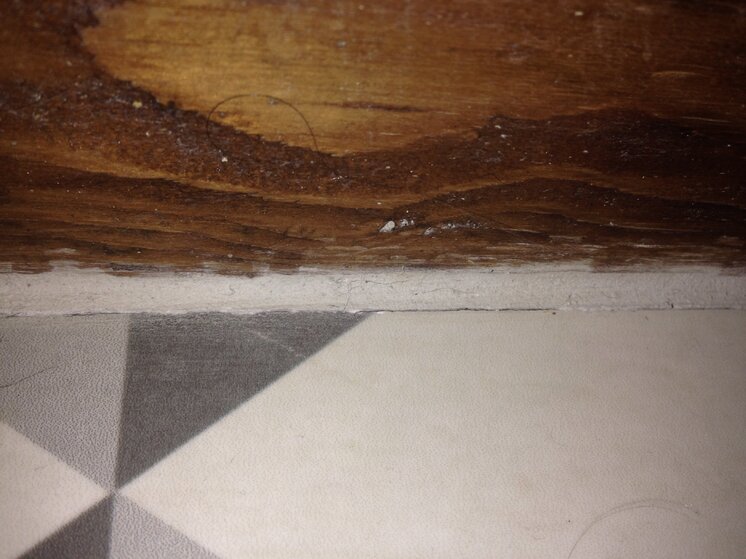N
natalie stanley
Good morning
I'm hoping somebody can help and give me a good honest opinion.
May last I had my kitchen tiled. The subfloor is 18mm ply with ditra.
Shortly after the floor was finished around a month later I noticed a crack in the grout running horizontally by the back door. It seems to coincide with where the ply underneath meets. The tiler said it wasn't abnormal to have cracks. It hasn't got worse but I am curious to understand why it's happened. By the doors to the back door part of the floor is concrete. I have photos to show the they didn't ditra over the concrete so half the tile is on concrete and the other on play and ditra. The crack is running a along the grout line after that tile. Thoughts? Another tiler seems to think it's because they didn't ditra over the concrete.
At the other end of the kitchen there are cracks running along the grout where the grout meets the old wooden stairs. I'm particularly concerned by this as the tiled floor directly where the cracked grout is make a little creaky noise when walked on. Not all the time but sometimes. I'm not entirely sure if it's the old stairs creaking or the ply underneath. Having looked online it says that sanded caulk should be used when grouting next to wood.
I have had the tiler who carried out the work back around however he thinks the cracks aren't a sign of anything bad but of course he would say that. He seems to think an old house such as mine has movement which could cause cracks in the grout..
Any thoughts you can share would be greatly appreciated. I've attached some pictures so you can see how the cracks look and may help you advise..
Thanks in advance
Nat


I'm hoping somebody can help and give me a good honest opinion.
May last I had my kitchen tiled. The subfloor is 18mm ply with ditra.
Shortly after the floor was finished around a month later I noticed a crack in the grout running horizontally by the back door. It seems to coincide with where the ply underneath meets. The tiler said it wasn't abnormal to have cracks. It hasn't got worse but I am curious to understand why it's happened. By the doors to the back door part of the floor is concrete. I have photos to show the they didn't ditra over the concrete so half the tile is on concrete and the other on play and ditra. The crack is running a along the grout line after that tile. Thoughts? Another tiler seems to think it's because they didn't ditra over the concrete.
At the other end of the kitchen there are cracks running along the grout where the grout meets the old wooden stairs. I'm particularly concerned by this as the tiled floor directly where the cracked grout is make a little creaky noise when walked on. Not all the time but sometimes. I'm not entirely sure if it's the old stairs creaking or the ply underneath. Having looked online it says that sanded caulk should be used when grouting next to wood.
I have had the tiler who carried out the work back around however he thinks the cracks aren't a sign of anything bad but of course he would say that. He seems to think an old house such as mine has movement which could cause cracks in the grout..
Any thoughts you can share would be greatly appreciated. I've attached some pictures so you can see how the cracks look and may help you advise..
Thanks in advance
Nat



